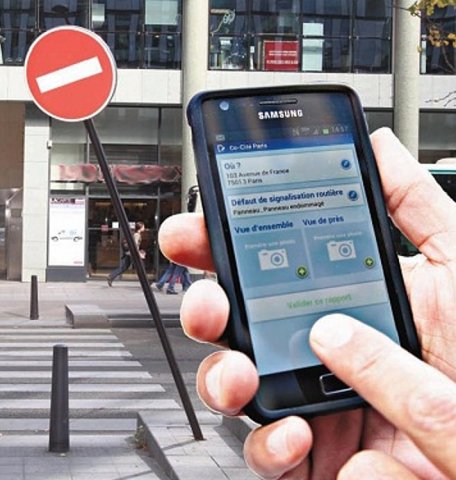CitéLibre Dans Ma Rue - Paris
Paris (France)
Inspired by the "Fix My Street" service, "Dans ma Rue" is a digital web service from the CitéLibre pack that not only allows the reporting of incidents, but also the follow-up of their resolution. More in detail, it offers:
- A mobile application allowing citizens to report incidents occurring in the public space (graffiti, illegal dumping, potholes, etc.) and thus accelerate their handling and resolution by the city's technical services. In addition, users can track the progress of their reports.
- An administration interface that automatically assigns the submissions to the appropriate departments (cleaning, collection, roads, etc.) for direct handling of the issue.
The submission of an incident is possible by indicating its classification, the address where it was observed, a photo and a comment. The first two criteria enable the incident to be assigned upon receipt.
When the process is over, a notification is sent by the system allowing the user to be informed when the incident is over and the issue is resolved.
As for any Lutece application, each request submitted in "Dans ma Rue" follows a workflow allowing the normalisation of the produced data, and thus internal statistical analyses for decision support or the extraction of data for a publication of these in open data format.
Every citizen becomes an actor in the quality of the facilities offered by the city because they are at the forefront of public life. It is easier for citizen to notice the general state of the facilities provided around the city and through this tool they have an proactive role and the power to participate in maintaining high the service quality.
A fundamental benefit of the tool is that it has enabled a new organisation model of the municipal services for the proper allocation of staff, according to incidents and to work with specialised maintenance companies.
Finally, by mobilising digital tools, it is now possible to build a database and thus communicate on incidents, their typology, their number, etc.
The city publishes an open database allowing for their analysis and an enhancement of the service in the next iterations.
Some tools developed with Lutece have been in place for 20 years. The development team constantly relies on users' feedback in order to maintain the functionalities and to adapt services usability according to the projects and to their audience.
